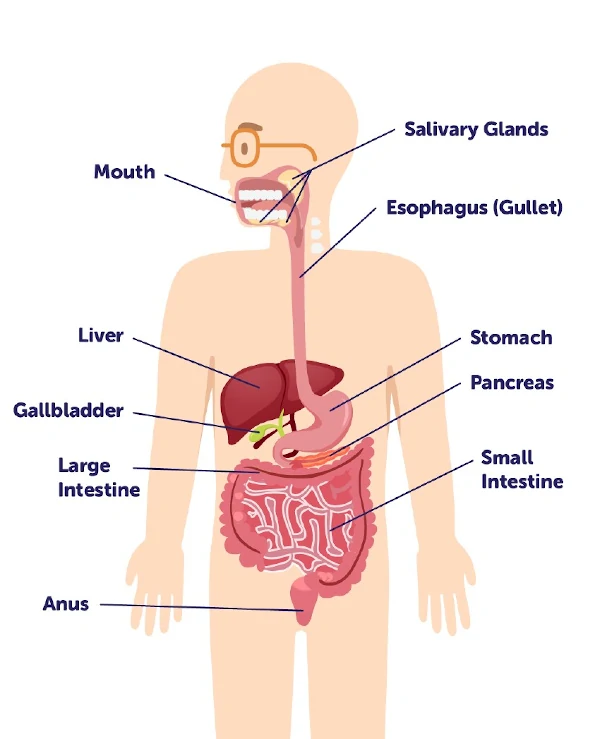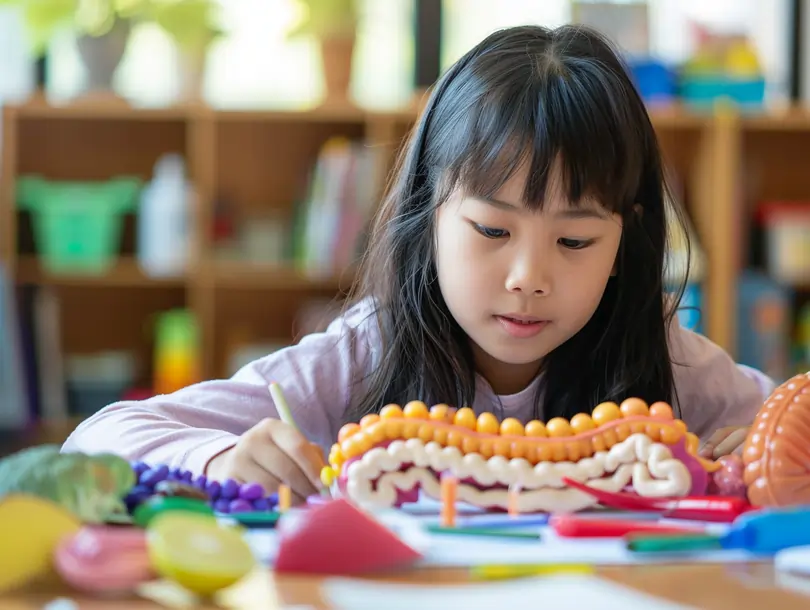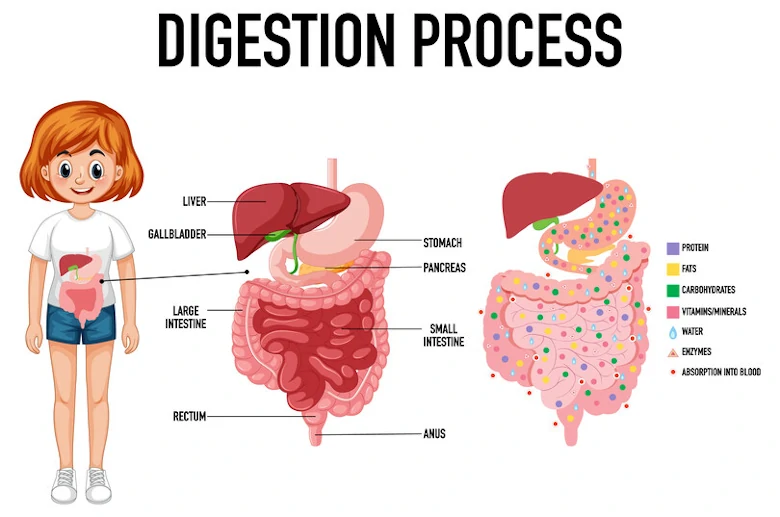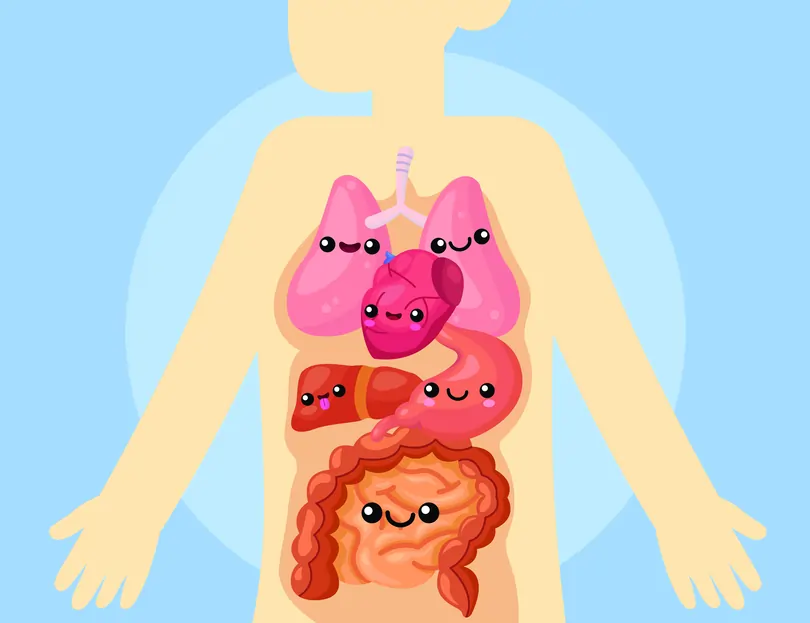Human Digestive System: How it works & a guided tour with detailed diagrams

Let's take a closer look at how our bodies digest food. This article breaks down a diagram of the human digestive system, making it easy to understand how our bodies digest what we eat.
Note: This video lesson on Digestive System is just one of the many weekly GenieClass lessons you can attend from the comfort of your home. If you prefer learning in a physical classroom, check out our new tech-enhanced tuition classes at Geniebook CAMPUS.
Why should Primary 3 students learn about the Digestive system?
For starters, let’s understand why this is one of the most important concepts for your child to master.
Students should learn about the digestive system because it helps them understand how their bodies work. Here are some other reasons why learning about the digestive system is a great idea:
- Health Awareness: Knowing how the digestive system functions can lead to better food choices and healthier eating habits. Students can make informed decisions about what they put into their bodies.
- Nutrition: Understanding digestion is key to grasping how our bodies extract nutrients from food. This knowledge can help students appreciate the importance of a balanced diet.
- Digestive Issues: Learning about the digestive system can help students recognize digestive problems and seek timely medical advice if needed.
- Overall Body Understanding: The digestive system is interconnected with other body systems. Knowing about it contributes to a broader understanding of human biology.
- Career Opportunities: For some students, studying the digestive system can be a stepping stone to careers in medicine, nutrition, or biology.
Explaining parts of the digestive system to your child in simple terms
Now that we understand why learning about the digestive system is important, let's explore the different parts that make it up.
Mouth
The mouth is where our digestive adventure begins. Think of it as the starting point where food enters our body. When you take a bite of something, your teeth go to work. They break down the food into smaller pieces, like cutting up ingredients for a recipe.
Meanwhile, your mouth is a clever chemist too. Saliva, a special liquid made by your salivary glands, joins the party. It contains enzymes, like amylase, that begin to break down complex carbohydrates in the food into simpler sugars. It's a bit like how heat changes the texture of some ingredients in cooking.
So, in simpler terms, the mouth's job is to chop up the food and start turning it into a kind of mush that's easier for the rest of your digestive system to handle. This mushy mixture is the first step on the journey of your food through your body.
Salivary glands
Picture the salivary glands as small food factories in your mouth. When you start eating, they get to work by producing saliva, a special liquid. This saliva contains enzymes, such as amylase, which begin the process of breaking down complex carbohydrates in your food into simpler sugars. Think of these glands as the chefs who add special ingredients to your meal to make it more digestible.
Esophagus (Gullet)
The esophagus, often called the gullet, is like a transportation tube for your food. It's a muscular pipeline that moves the chewed and moistened food from your mouth to your stomach. Imagine it as a slide in an amusement park, ensuring your food gets safely from the top to the bottom.
Liver
Think of the liver as the body's master chemist. It processes nutrients from the food you eat and helps filter toxins from your blood. Much like a high-tech factory, it ensures that the right substances are delivered to your body, while harmful ones are removed.
Stomach
The stomach acts as a digestion powerhouse. It receives the food mixture from your mouth and churns it with strong acids and muscular contractions. This action further breaks down the food into a semi-liquid substance called chyme. It's where proteins begin to unravel, similar to marinating meat in cooking, getting it ready for the next culinary step.
Gallbladder
Imagine the gallbladder as a storage container for a special digestive juice called bile. When you eat foods rich in fats, like butter or cheese, it squirts bile into the small intestine. This bile acts like a detergent, breaking down the fats into smaller droplets, making them easier to digest, just like soap helps clean greasy dishes.
Pancreas
The pancreas is a versatile organ, functioning like a Swiss army knife in your digestive process. It releases a mix of enzymes into the small intestine to break down carbohydrates, proteins, and fats. It's like having various kitchen gadgets for different cooking tasks, ensuring your food is properly prepared for absorption.
Large intestine
The large intestine is like the last stop on the digestion train. Here, water is absorbed from the remaining chyme, transforming it from a liquid into a more solid waste material. Think of it as a kitchen sink that drains excess water, leaving behind the leftovers you don't need.
Small intestine
The small intestine is where the real nutrient extraction takes place. It's like the main chef's kitchen, where the magic happens. Nutrients from your food are absorbed into your bloodstream through tiny finger-like structures called villi. This allows your body to use these nutrients for energy and growth.
Anus
Lastly, the anus is the exit door in this digestive journey. It's where the solid waste, what's left after all the digestion and nutrient absorption, leaves your body. Similar to taking out the trash after a meal, it's the final step in this culinary adventure.
So, all these parts work together in a coordinated culinary symphony, turning your food into the energy and nutrients your body needs to function properly.
Make Science exciting and easy for your child at Geniebook CAMPUS.
Discover how interactive lessons make topics like digestive system simple and fun to understand. At Geniebook CAMPUS, we use engaging visuals and hands-on activities to help students explore key concepts while building confidence in Science.
Why choose Geniebook CAMPUS?
- Engaging and structured lessons: In an interactive and supportive environment, we design our lessons to foster critical thinking and concept mastery.
- Conducive Learning Environment: Interactive smartboards and tablets enhance learning and boost student participation, offering an exciting and dynamic learning experience.
- Tailored learning support: Lessons and resources align with the primary school curriculum, addressing your child's unique learning needs. Students also get one-to-one guidance with daily teacher support.
- Comprehensive resources: From hands-on practice to conceptual clarity, our approach ensures your child is well-prepared for exams.
- See visible progress with insightful reports: Get prompt and detailed feedback on your child's progress with monthly reports.
Join us today at Geniebook CAMPUS and make learning Science exciting! Sign Up for a Free Trial
Frequently Asked Questions (FAQs)
What is the function of the digestive system?
The digestive system helps break down the food we eat into smaller pieces. This allows the body to absorb important nutrients like vitamins and energy to help us grow and stay healthy.
What are the main organs in the digestive system?
The main organs in the digestive system are the mouth, gullet, stomach, small intestine, and large intestine. Each organ has a special role in breaking down food.
How does food move through the digestive system?
After chewing, food travels down the oesophagus to the stomach, where it is broken down further. It then moves into the small intestine, where nutrients are absorbed, and finally, the leftover waste goes to the large intestine.
What happens to the food after it’s digested?
Once the food is broken down, the nutrients get absorbed in the small intestine and enter the bloodstream. The rest of the food, which isn’t needed, becomes waste and leaves the body when we go to the toilet.


 SG
SG  VN
VN 


















